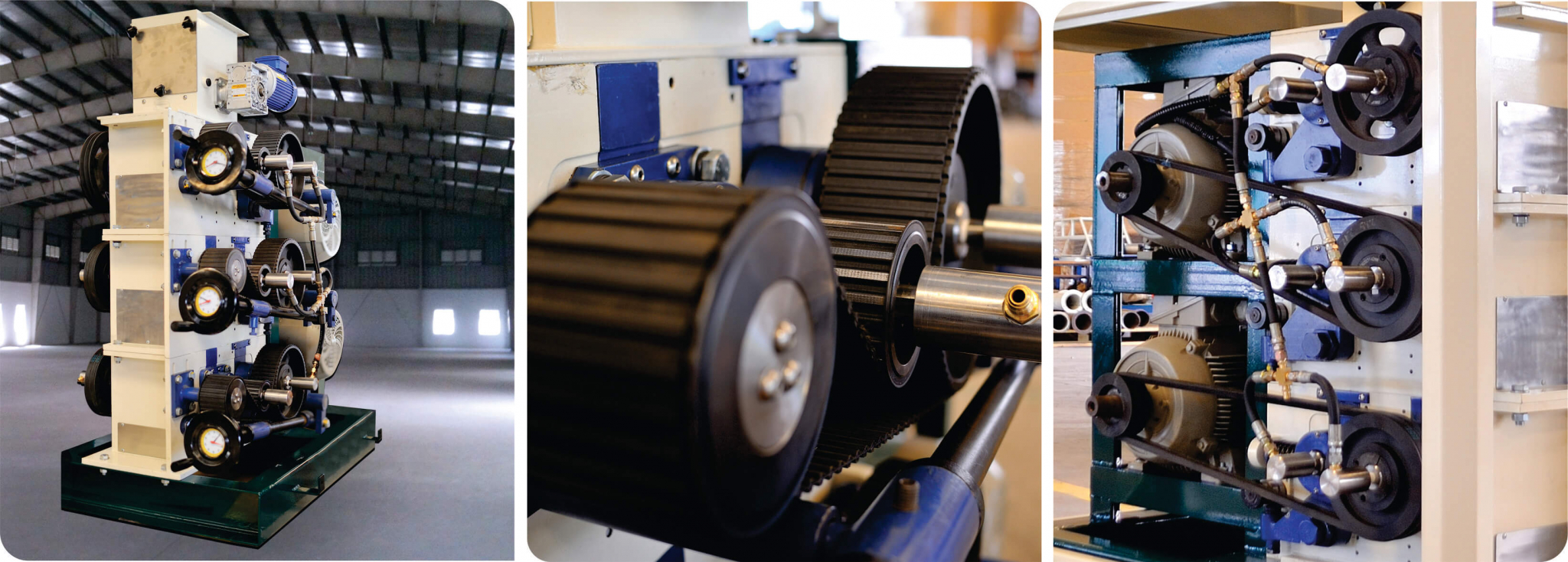Industrial Coffee Grinder Guide: Boost Effectiveness and High Quality
In the competitive landscape of coffee manufacturing, choosing the right industrial coffee mill plays a critical duty in boosting both efficiency and item high quality. Recognizing the subtleties of different grinder kinds and vital attributes-- such as customizable work settings and robust building-- can significantly influence the final taste profile of the coffee.
Recognizing Mill Types
When selecting a commercial coffee grinder, comprehending the numerous kinds offered is important for maximizing both flavor removal and functional performance. The 2 main types of mills are blade mills and burr mills.

Eventually, choosing the appropriate kind of mill is indispensable to keeping quality and effectiveness in coffee production, making it crucial for organizations to spend in top quality burr mills for ideal results.
Key Features to Consider
Selecting a commercial coffee mill needs cautious consideration of several essential functions that can considerably affect both performance and the total coffee experience. One of the main aspects to review is the grinding device. Burr grinders are usually liked over blade grinders, as they provide a consistent grind size, which is critical for optimum extraction and flavor.
An additional important feature is the mill's ability. Relying on the quantity of coffee you require to procedure, select a version that can handle your needs without giving up speed or top quality. Additionally, consider the grind setups provided. A flexible grinder with multiple settings permits you to customize the work size to various developing methods, enhancing the coffee's flavor profile.
The construction product likewise contributes in longevity and maintenance. Stainless-steel elements typically supply durability and are easier to clean, which is essential for keeping health standards. Review the grinder's sound degree, particularly in a hectic café or manufacturing atmosphere, where too much sound can be disruptive. Spending in a mill that stabilizes these attributes can considerably boost both functional efficiency and the high quality of the coffee offered.
Optimizing Grinding Refine
To accomplish the ideal outcomes in coffee preparation, enhancing the grinding process is essential. The work dimension substantially influences removal, flavor, and total quality of the brewed coffee.


Furthermore, keeping an eye on the grinding speed can optimize the process. Slower grinding often produces much less warm, preserving delicate flavors and aromas. On the other hand, faster grinding might generate excessive warm, negatively affecting visit the coffee's high quality.
Upkeep and Treatment Tips
Proper maintenance and treatment of industrial coffee mills are vital for guaranteeing optimum efficiency and longevity. Normal cleansing is the structure of maintenance; deposit buildup can influence taste and grinding performance. It is a good idea to clean the mill after each usage, cleaning down the exterior and getting rid of any coffee premises from the burrs.
Furthermore, inspect the grinding burrs for deterioration. Plain burrs can compromise grind consistency, so they must be changed as essential. Industrial Coffee Grinder. Periodically calibrating the mill is additionally critical, as this keeps the preferred grind dimension for various brewing methods
Lubrication of moving components should be done according to the manufacturer's specifications, as this minimizes rubbing and lengthens the life of the tools. It is vital to use food-grade lubes to make certain safety and compliance with wellness policies.
Finally, keep the mill in a dry and secure environment to avoid rust and deterioration. By adhering to these upkeep and treatment suggestions, drivers can improve the effectiveness of their industrial coffee grinders while ensuring top quality outcome and prolonged operational life.
Return on Investment Analysis
Evaluating the roi (ROI) for check my reference industrial coffee grinders is crucial for organizations looking for to optimize their coffee manufacturing abilities. A comprehensive ROI analysis helps figure out the financial practicality of investing in top quality grinders, enabling businesses to evaluate the initial prices against potential gains.
To carry out a thorough ROI evaluation, businesses must think about several key aspects. Initially, assess the acquisition rate of the grinder, including installation and any kind of essential modifications to existing infrastructure. Next, compute operational costs, visit site including power usage, upkeep costs, and labor performance improvements. High-performance mills typically lead to reduced grinding time and raised throughput, which can substantially enhance productivity.
Additionally, consider the influence on product quality. Industrial Coffee Grinder. Superior grinders generate an even more constant work dimension, which can enhance taste profiles and consumer fulfillment, eventually driving sales. By increasing the top quality of the last item, businesses can validate greater rates, resulting in increased income
Conclusion
In summary, an industrial coffee grinder plays a crucial duty in boosting both performance and item top quality within coffee manufacturing. By choosing top notch burr mills geared up with important features such as adjustable grind setups and resilient building and construction, businesses can guarantee optimal taste removal. Regular maintenance is crucial for maintaining grinder efficiency and optimizing consumer satisfaction. Inevitably, the strategic investment in a dependable mill adds dramatically to boosted revenue and competitiveness in the coffee industry.
In the affordable landscape of coffee production, selecting the right industrial coffee grinder plays a critical role in boosting both effectiveness and product top quality. The 2 main types of grinders are blade mills and burr grinders. Within the burr grinder classification, there are flat burr mills and conelike burr grinders, each with its advantages. Burr mills are typically preferred over blade mills, as they offer a consistent grind dimension, which is essential for optimum extraction and taste.
In summary, a commercial coffee grinder plays a crucial function in enhancing both effectiveness and item top quality within coffee production.